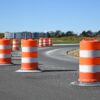-
 play_arrow
play_arrow
Radio Rehoboth

Sussex County is giving Mother Nature a little extra breathing room when it comes to new development.
County council at its Aug. 27 meeting approved updates to county code that will strengthen requirements for perimeter buffers and forest retention along residential development boundaries. The new rules will take effect six months from adoption, in February 2025.
The initiative dates back to the county’s 2018 comprehensive plan. In the past year, several workshops and hearings were held involving members of county council, the planning & zoning commission, and county staff, along with input from scores of constituents raising concerns about protecting the county’s natural areas, including established forests and woodlands.
Among other things, the ordinance promotes using natural woodlands as buffers when possible, rather than allowing developers to clear-cut existing trees and plant saplings in their place; sets rules for when any new trees must be planted; establishes better coordination of timing for home building and buffer construction; and steps up county inspections of buffer areas to ensure compliance.
“Ultimately, I think this comes down to a better design. We’re building a better widget,” said County Administrator Todd Lawson. “This is going to improve the way developments look and feel in Sussex County moving forward.”
County officials said the changes came about after constituents voiced concerns in recent years about development and its effects on Sussex County’s natural resources, wanting to ensure the county had the appropriate protections in place to preserve the qualities that make southern Delaware special. County staff, at the direction of elected officials, drafted the ordinance to try to strike a balance that would better protect existing natural features while improving development practices.
To give developers flexibility while recognizing public concerns, the ordinance encourages the use of existing woodlands for new buffers, but establishes a two-for-one mitigation requirement when older, established trees have to be removed. The ordinance also sets penalties of $10,000 per quarter-acre of disturbed area for clear-cutting trees in a designated buffer, a practice that previously had been permitted under county code. The code will now require that buffers be planned out and work started at the beginning of a project to ensure trees, both established and newly planted, have adequate time to reach viability and will not suffer adverse effects from nearby construction activities.
“That effectively flips the sequence, so buffers are being preserved or installed first, before any housing is constructed,” Lawson said. “That’s a pretty big step forward in our land-use policy and thinking, one that we believe addresses a frequent concern we’ve heard over the years from residents.”
County Council President Michael Vincent said the ordinance is the product of the public voicing its concerns, and elected and appointed officials responding in a way that offers enhanced protections while still allowing for the county to grow in a sensible manner.
“Growth is inevitable, but how we manage it – and what we leave for future generations – says something about us as a community. It really is our legacy,” Vincent said. “This ordinance addresses some long-held building practices that might have worked in another time, but are less desirable in today’s environment. I think it’s a compromise that hopefully will make everyone happy, and certainly one that makes for a better Sussex County, today, tomorrow and beyond.”
To see a copy of the ordinance, visit sussexcountyde.gov/ordinances.
Go to Source:https://www.capegazette.com/article/sussex-county-adopts-new-residential-buffer-zone-ordinance/280204
Author:
Written by: RSS
Similar posts
Chart
Top popular

News Briefs 10/17/23
Board of Commissioners Workshop & Special Meeting – November 6

Six Sussex road projects considered in latest CTP
NFL Week 17 highlights: Packers, 49ers, Saints, Steelers win, Cardinals stun Eagles
Knicks vs. Cavaliers prediction, odds, line, spread, time: 2023 NBA picks, Nov. 1 best bets from proven model
Copyright 2023 East Sussex Public Broadcasting, Inc.






